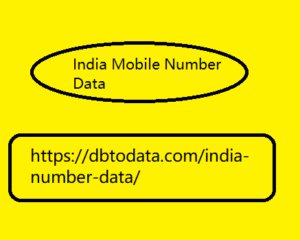Post by account_disabled on Mar 10, 2024 12:43:37 GMT 3.5
YouTube has shed light on the general principles that guide the algorithm that suggests videos to watch. In the past I had reviewed the functioning of the algorithms of Facebook , Instagram , Twitter , LinkedIn , TikTok and Spotify , but I had never focused on the Google social network because it has always been quite intuitive. In recent times, however, it has also been significantly modified to meet the needs of users and combat the phenomena of misinformation and violence. Previously, the suggested contents were simply chosen from those most viewed by all viewers in a certain country, while today they follow more sophisticated rules, enhanced by the use of Artificial Intelligence.
The signals considered by the YouTube algorithm The algorithmic recommendation India Mobile Number Data system acts on two occasions: in the composition of the homepage and in the "next video" function. The main YouTube page is dynamically composed every time we access it with videos from channels to which we are subscribed, those from accredited news sources (in the last year, prominence was given to "news on Covid-19") and those chosen for us by machine learning algorithms. The latter are highly personalized based on over 80 billion pieces of information called "signals". The most important are: the clicks on the videos make the system understand that we have a certain degree of curiosity towards them.

This is a general indication that is weighed and evaluated together with all the other factors because I may only have a temporary interest in a content that I have selected; the watchtime is the viewing time of each clicked video. Naturally the system will assign greater weight to those contents that we looked at for the longest time and not to those abandoned after a few seconds because they were not in line with expectations. For example, if the cumulative time spent watching movie reviews is greater than that spent watching trailers and extra content, the system will probably offer us more reviews in the future; survey responses : since users sometimes leave YouTube in the background without really paying attention to what is being broadcast, the need arose to measure what is called "valuable watchtime". In practice, some users are subjected to a survey asking them to rate the video they have seen from one to five stars and to justify their response. Only videos with four and five stars will be considered useful for the user.
The signals considered by the YouTube algorithm The algorithmic recommendation India Mobile Number Data system acts on two occasions: in the composition of the homepage and in the "next video" function. The main YouTube page is dynamically composed every time we access it with videos from channels to which we are subscribed, those from accredited news sources (in the last year, prominence was given to "news on Covid-19") and those chosen for us by machine learning algorithms. The latter are highly personalized based on over 80 billion pieces of information called "signals". The most important are: the clicks on the videos make the system understand that we have a certain degree of curiosity towards them.

This is a general indication that is weighed and evaluated together with all the other factors because I may only have a temporary interest in a content that I have selected; the watchtime is the viewing time of each clicked video. Naturally the system will assign greater weight to those contents that we looked at for the longest time and not to those abandoned after a few seconds because they were not in line with expectations. For example, if the cumulative time spent watching movie reviews is greater than that spent watching trailers and extra content, the system will probably offer us more reviews in the future; survey responses : since users sometimes leave YouTube in the background without really paying attention to what is being broadcast, the need arose to measure what is called "valuable watchtime". In practice, some users are subjected to a survey asking them to rate the video they have seen from one to five stars and to justify their response. Only videos with four and five stars will be considered useful for the user.

